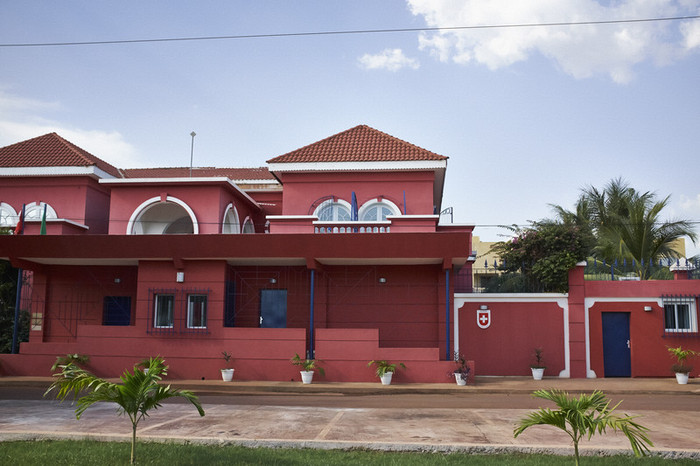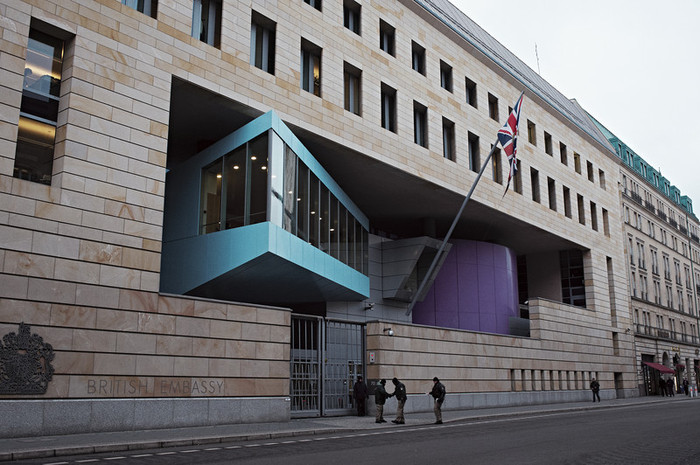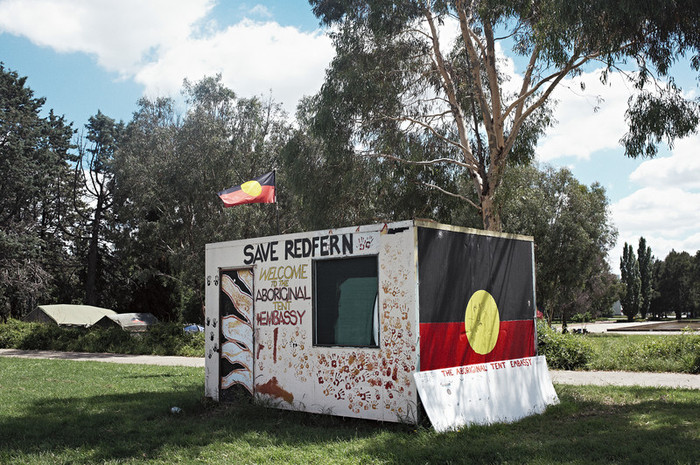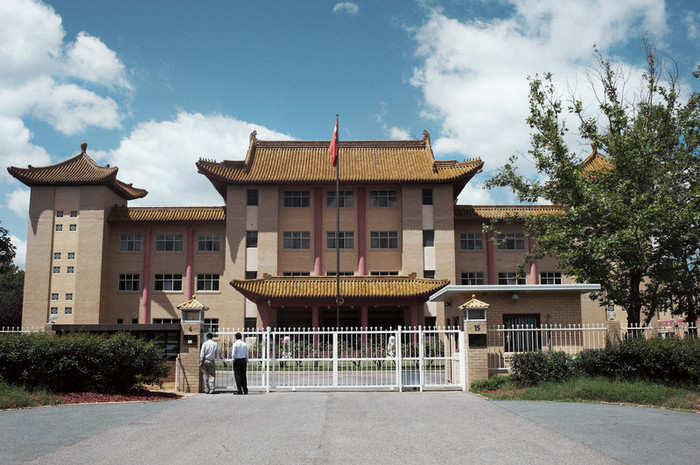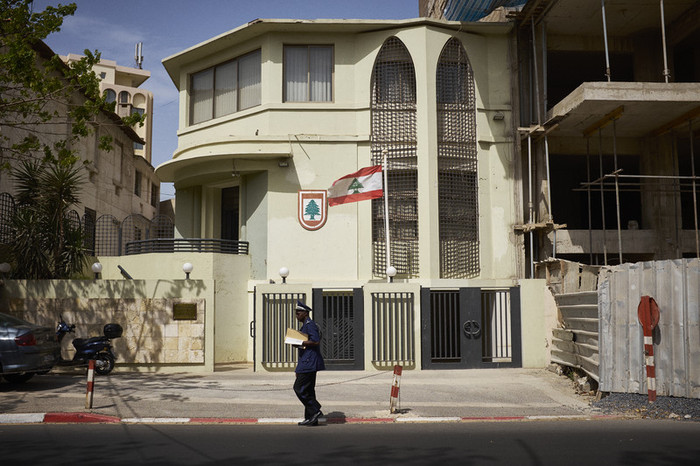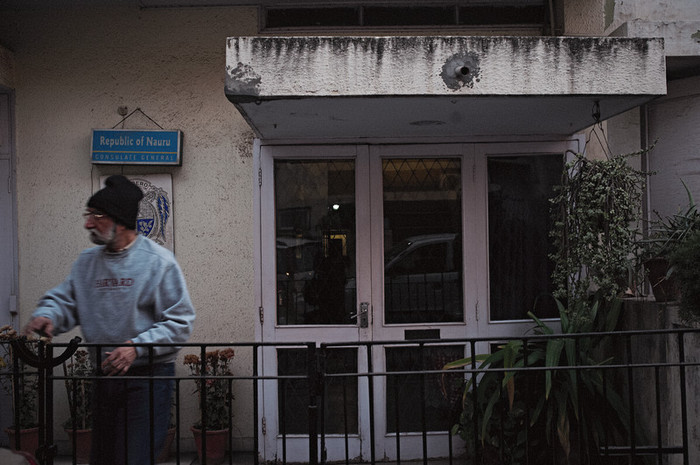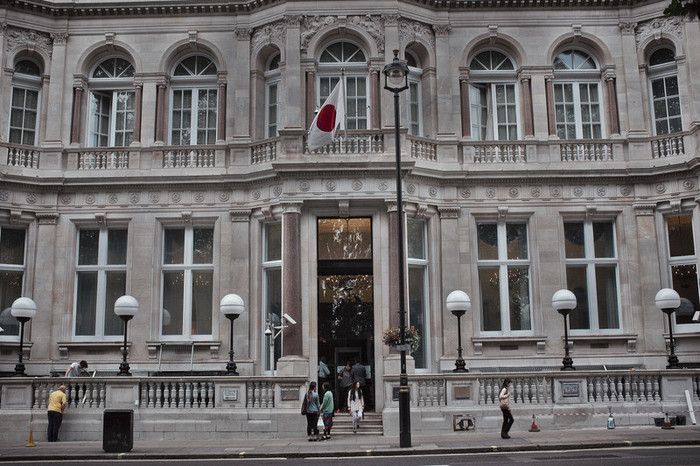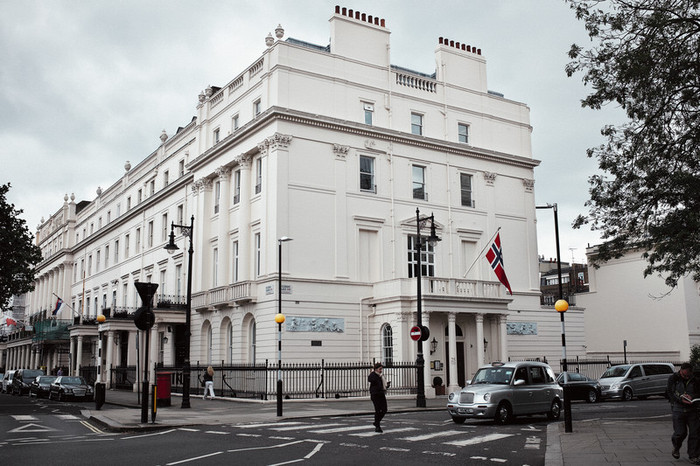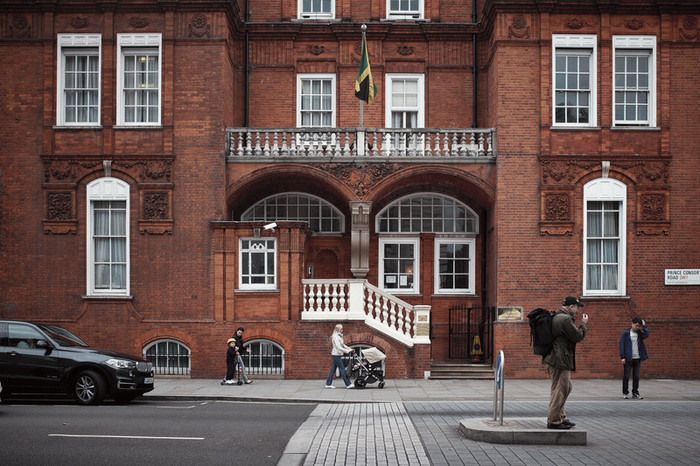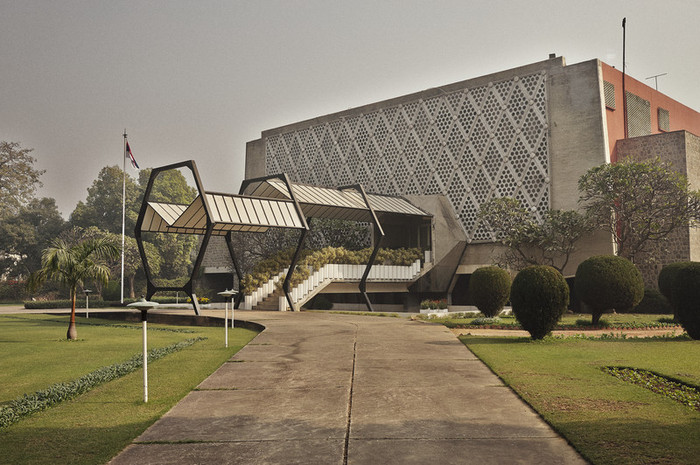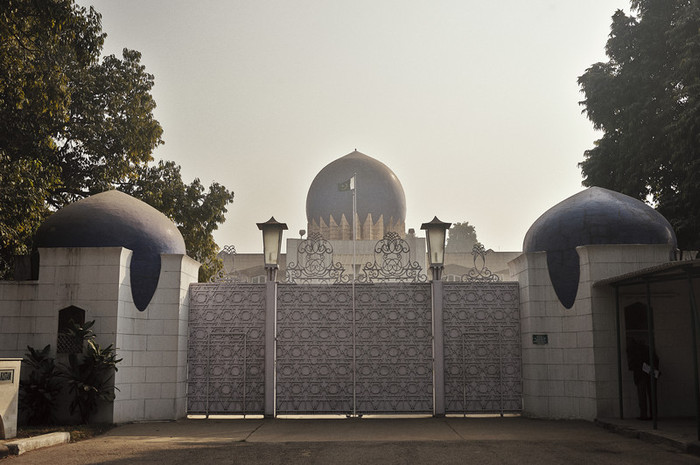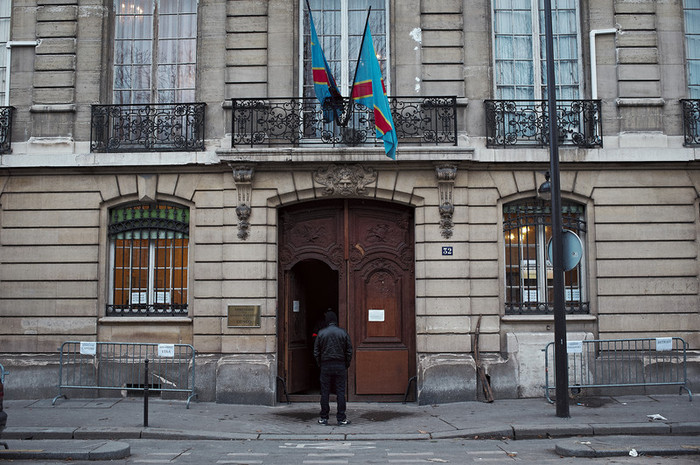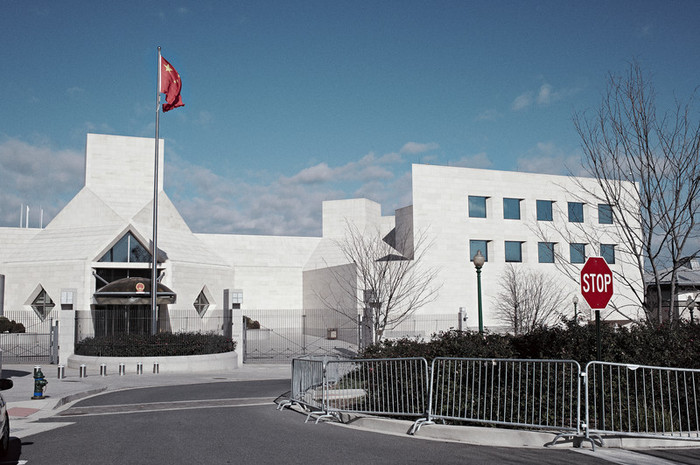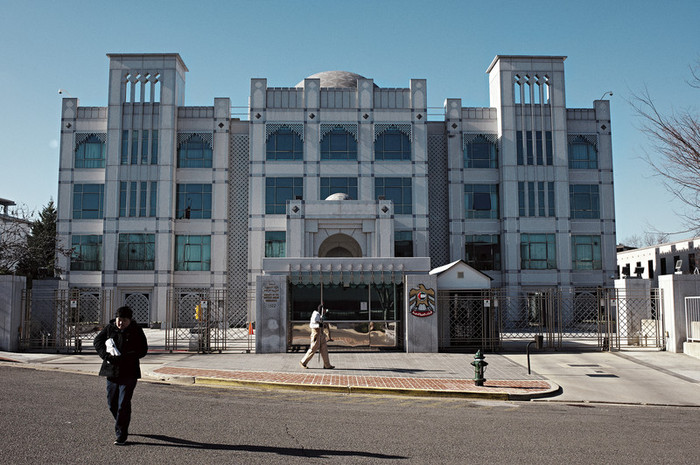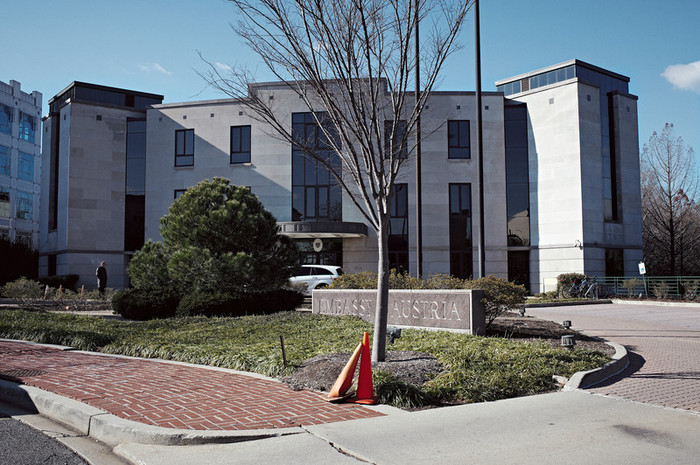Houses of Power
© Sam PhelpsHouses of Power explores themes of international relations between foreign powers, global security and territorial ownership by photographing diplomatic missions in cities around the world. It investigates the symbolism of the diplomatic mission within a host country and how that guest country wishes to be perceived. Diplomatic missions take on varying titles and degrees of importance always defined by historical, political, geographical and social ties between countries.
Documenting both these highly protected embassies with armed guards, road blocks and barbed wire comments on the state of global security and the power that terrorist groups now yield, metamorphosed as fear. The photographer’s role as social commentator is raised with material produced potentially perceived as a threat to a nation’s security leading to possible censoring of images. People will occasionally be present within the images themselves and their existence signifies by products of diplomacy, their often diminutive presence dwarfed by the architectural forms of an embassy speaks of the status of individual within the nation state.
The architecturally imposing Chinese embassy which was recently completed in Washington D.C. signifies the imperial ambitions of China in global politics to position itself as a rival superpower to the United States. Documenting the modest embassy of Nauru in New Delhi comments on ambitions of building strong ties with India potentially to create a bargaining chip with China for future aid to bolster it’s failing economy.
The Australian Embassy in Jakarta, Indonesia is seen as Australia’s most important foreign post given the close proximity of the two countries. The large physical scale of the embassy represents how Australia wishes to be viewed by it’s neighbour while the high level of security around the embassy comments on fears of an attack by the armed forces, local population or terrorist group.
The Aboriginal Tent Embassy in Canberra, Australia is a semi-permanent assemblage of tents clustered on the lawn of Old Parliament House in the nation’s capital. It represents the political demands of Australian Aboriginal people and was created in 1972 as a response to the government’s refusal to recognise Aboriginal land rights at the time. It is not recognised as having official diplomatic status as defined by the Vienna Convention and is defined as a Representative Office. It’s inclusion comments on international laws and alliances between nations in determining the sovereignty of a country and their citizens.
By documenting these diplomatic missions Houses of Power shows how nations exert their foreign policy ambitions within an architectural context. As the project progresses an archival catalogue will be constructed with the intention that the viewer can compare dozens of diplomatic missions alongside each other and better understand the intricacies of international relations symbolised by one building that projects a nation’s identity on a global level.
click to view the complete set of images in the archive


